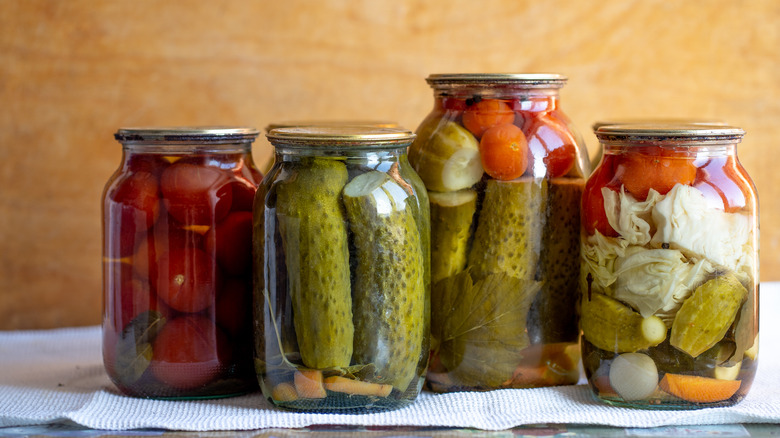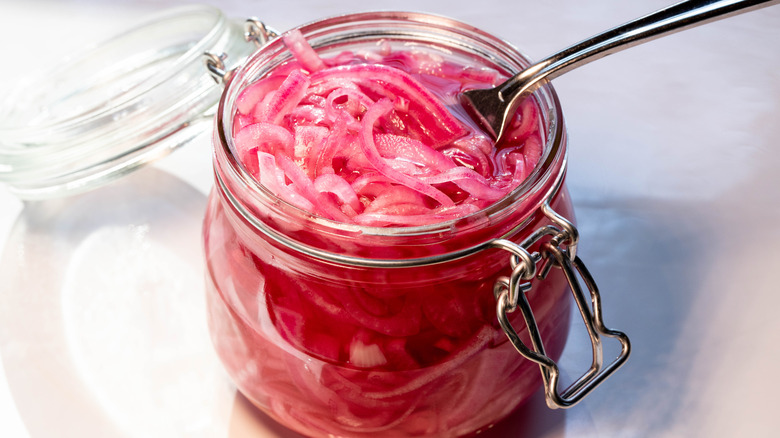The Process Of Quick Pickling, Explained
Quick pickling is one of the most useful techniques any home cook can know about. Not only does it save money and avoid food waste by allowing you to preserve produce that is declining in quality, but it also opens up an entirely new world of tasty sides, condiments, and garnishes for your recipes. The best part of all is that you do not need any expensive equipment, fancy ingredients, or special expertise to get started.
Quick pickling is the act of placing ingredients into a brining solution for preserving, just like regular pickling. The difference is that instead of canning and fermenting the ingredients for a long period, you simply place quick pickles in the fridge where they will be ready to enjoy in minutes. While quick pickled produce is not shelf stable and doesn't last as long as traditionally pickled goods, the method can be much more approachable and convenient for many people who only need to stretch the longevity of their food by a few weeks — or who simply enjoy the flavor of pickled goods.
How to make a quick pickle
Using this technique begins by creating brine, the proportions of which can be adjusted to accommodate individual taste. Look to a familiar recipe like our classic dill pickles to get basic proportions: a 3-to-1 water to vinegar ratio and a few tablespoons of sugar and salt. From there, you can add any herbs and spices. Classic examples include garlic, mustard, and peppercorns. Heat the mixture on the stove until the salt and sugar dissolve. When the brine is ready, add your produce of choice into a jar and pour the hot brine over top, making sure to cover all of the produce. Finally, seal the jar and allow it to cool in the fridge before enjoying.
Some ingredients may be obvious contenders for pickling. You've likely eaten pickled cucumbers and pickled red onions before. There are, however, many more possibilities available to you. Not only can you pickle vegetables like carrots and green beans, but also fruits such as peaches and pineapple for a sweet and sour result. The resulting pickled produce can be used to elevate so many meals. Try adding pickled cherry tomatoes to a sandwich for a burst of juicy acidity, or use pickled strawberries as a unique feature on a charcuterie board. Transform your extra corn on the cob into delicious pickled corn for salads, or pickle jalapeños for a classic nacho topping. The list is truly endless.

